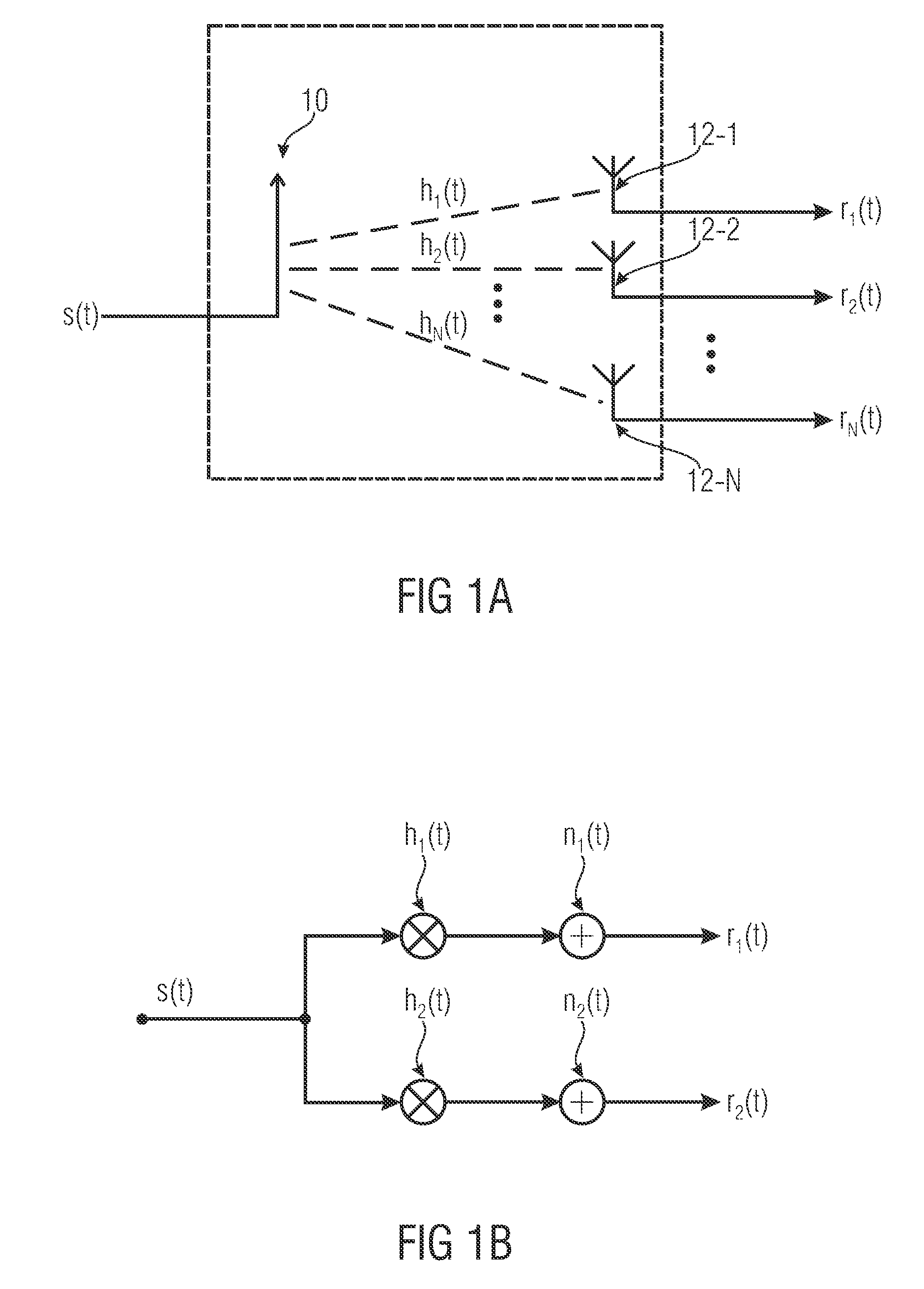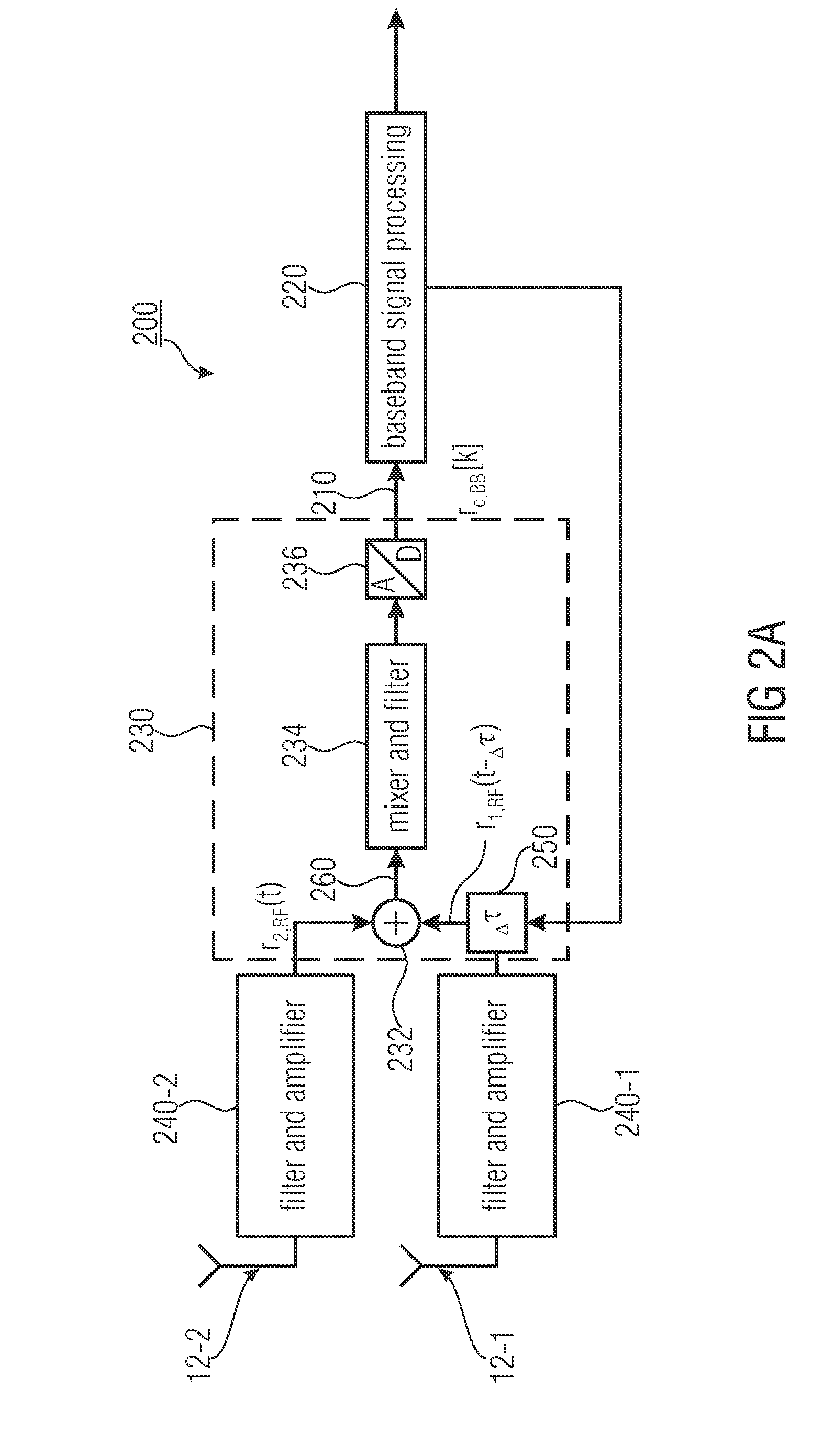Apparatus and Method for Antenna Diversity Reception
- Summary
- Abstract
- Description
- Claims
- Application Information
AI Technical Summary
Problems solved by technology
Method used
Image
Examples
first embodiment
[0026]Turning now to FIG. 2a, a schematic block diagram of the present invention is illustrated.
[0027]FIG. 2a shows an apparatus 200 for providing a baseband signal 210 for exploiting receive antenna diversity by means of a digital baseband processor 220. The apparatus 200 comprises a combiner 230 configured to temporally delay a first received signal r1(t) corresponding to a first receive antenna 12-1 with respect to a second receive signal r2(t) corresponding to a second receive antenna 12-2. The combiner 230 is further configured to add the delayed first received signal r1(t−Δτ) and the second received signal r2(t) to obtain a baseband representation of a combined signal rc(t) at an output of the first combiner 230 as the baseband signal 210 for exploiting the receive antenna diversity.
[0028]Hence, the apparatus 200 is configured, according to embodiments, to convert spatial diversity into multipath diversity. For example, in case of individual flat fading channels hn(t) (n=1, . ...
embodiment 270
[0035]While FIG. 2a depicts an embodiment for exploiting receive antenna diversity or spatial diversity, wherein the delayed first received signal and the second received signal are combined in the analog RF-signal domain, FIG. 2b shows an embodiment 270, wherein the delayed first received signal and the second received signal are combined in the digital baseband signal domain.
[0036]According to FIG. 2b, the first and second received RF-signals r1,RF(t), r2,RF(t) are first band-pass filtered, low-noise amplified and down-converted using circuit blocks 280-1 and 280-2, respectively. The resulting analog baseband signals r1,BB(t), r2,BB(t) are then analog-to-digital-converted using the ADCs 236-1 and 236-2, respectively. Then, the first received digital baseband signal r1,BB[kT] is delayed by Δτ by means of delay element 250 in order to obtain a delayed first received digital baseband signal r1,BB[kT−Δτ]. This delayed first received signal r1,BB[kT−Δτ] is then added to the digital bas...
PUM
 Login to view more
Login to view more Abstract
Description
Claims
Application Information
 Login to view more
Login to view more - R&D Engineer
- R&D Manager
- IP Professional
- Industry Leading Data Capabilities
- Powerful AI technology
- Patent DNA Extraction
Browse by: Latest US Patents, China's latest patents, Technical Efficacy Thesaurus, Application Domain, Technology Topic.
© 2024 PatSnap. All rights reserved.Legal|Privacy policy|Modern Slavery Act Transparency Statement|Sitemap



